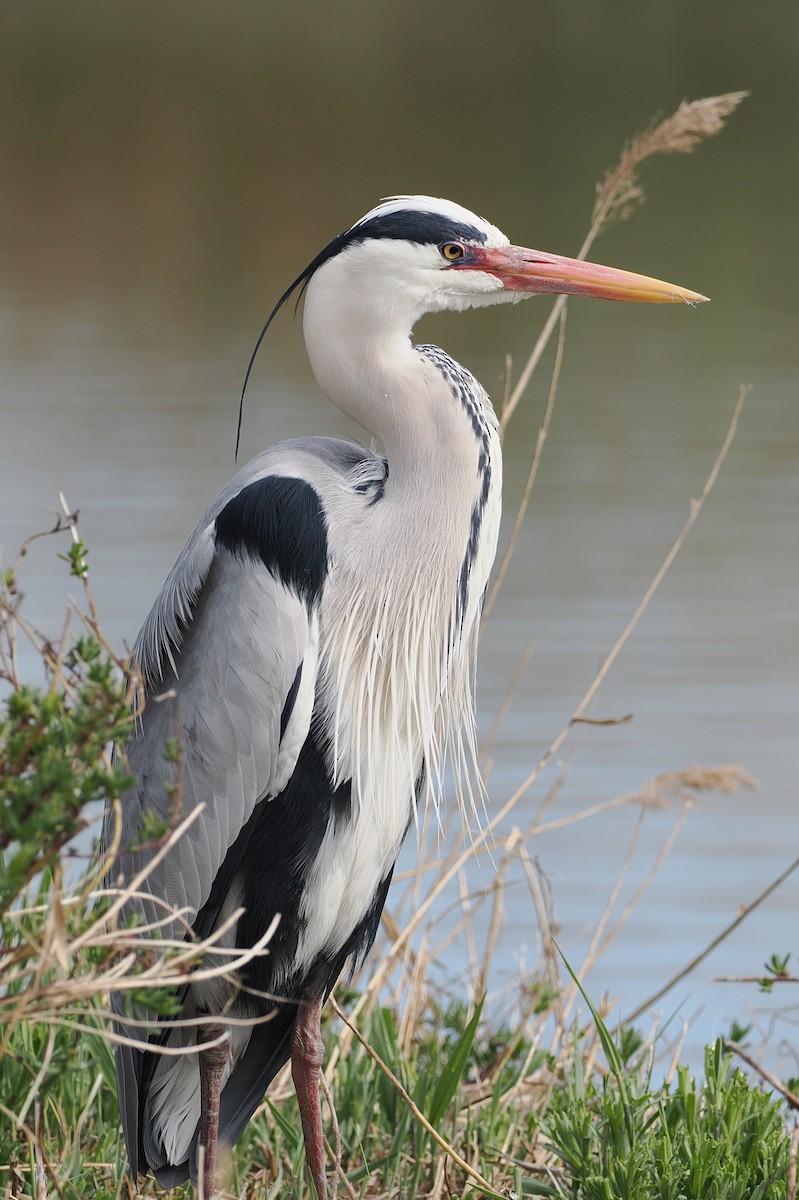Family: Ardeidae
Genus: Ardea
Generally quite common and conspicuous in wetland habitats from marshes and tidal flats to small ponds, ditches, and wet fields; nests colonially in tall trees. Mainly seen as singles or in small groups, standing quietly in or at the edge of water, less often hunting in fields. Plumage mostly gray overall, with paler neck; adult has white crown, black eyebrows, and black shoulder patch. Like other herons and egrets, flies with neck pulled in to form a bulge.
Photo: Look how gorgeous [myshortcode]
Description [myshortcode]

In Europe, the grey heron is a familiar sight, being present in almost every country on the continent. It is particularly abundant in wetland habitats, where it can be seen standing motionless at the water’s edge, waiting to catch fish, amphibians, and other aquatic prey. In Asia, the species is found in a similarly diverse range of habitats, including temperate and tropical regions. The grey heron’s distribution in Africa spans from the Mediterranean coast to the southern tip of the continent, encompassing a variety of wetland and coastal environments.
The grey heron’s ability to adapt to a wide range of habitats within its distribution range has contributed to its success as a species. It is known for its striking appearance, featuring a predominantly grey plumage, long legs, a long, S-shaped neck, and a sharp, dagger-like bill. Its towering height and elegant posture make it an iconic and easily recognizable bird.
In addition to its widespread distribution, the grey heron is also known for its distinctive nesting habits. It builds its nest in tall trees, reed beds, or on cliff ledges, often in close proximity to water. The species is colonial in its nesting behavior, with multiple pairs nesting in close proximity to one another.
Overall, the grey heron’s distribution across Europe, Asia, and Africa highlights its adaptability to a variety of wetland and coastal habitats. Its striking appearance, widespread presence, and unique nesting habits make it a prominent and well-studied species in ornithology and ecology.



